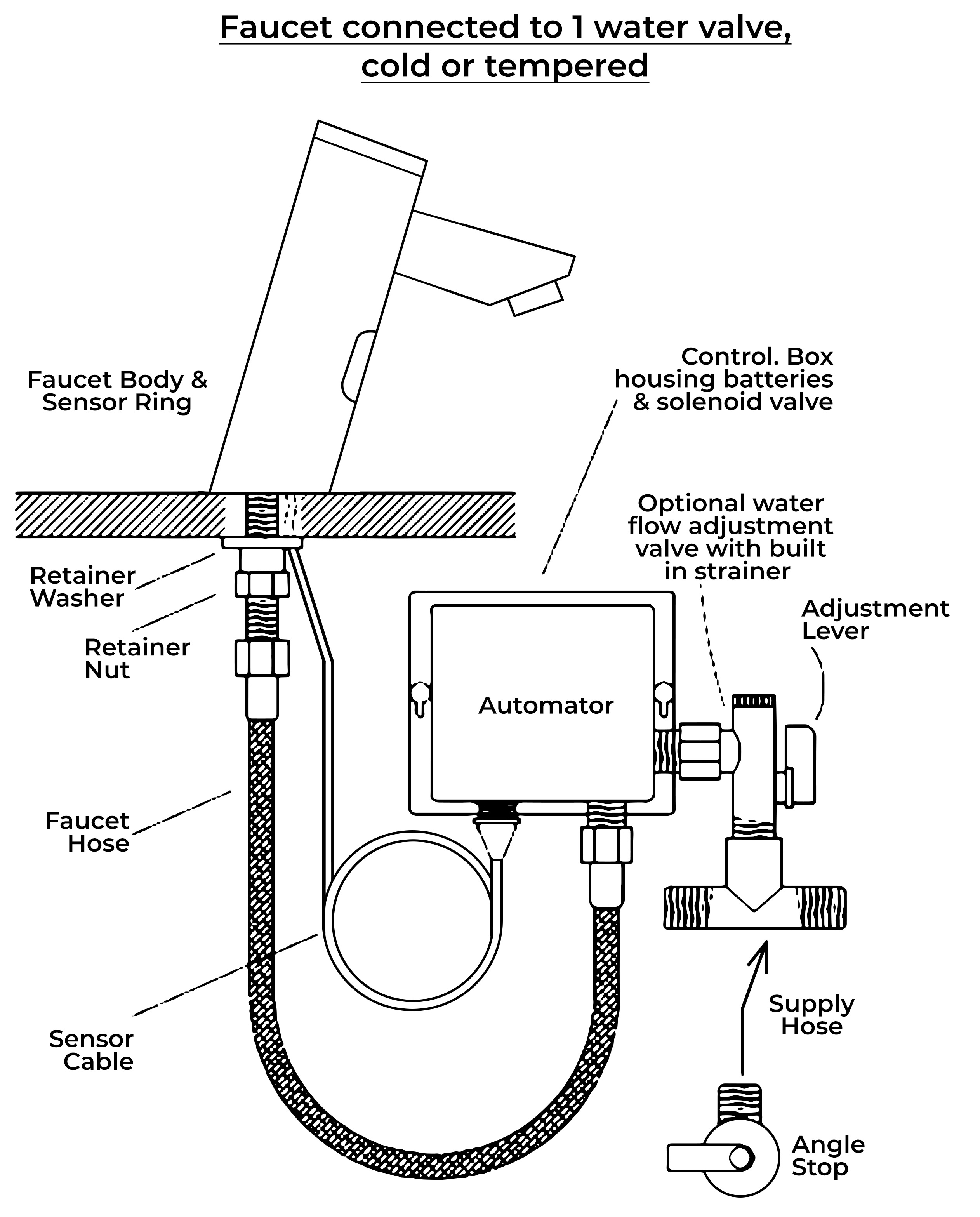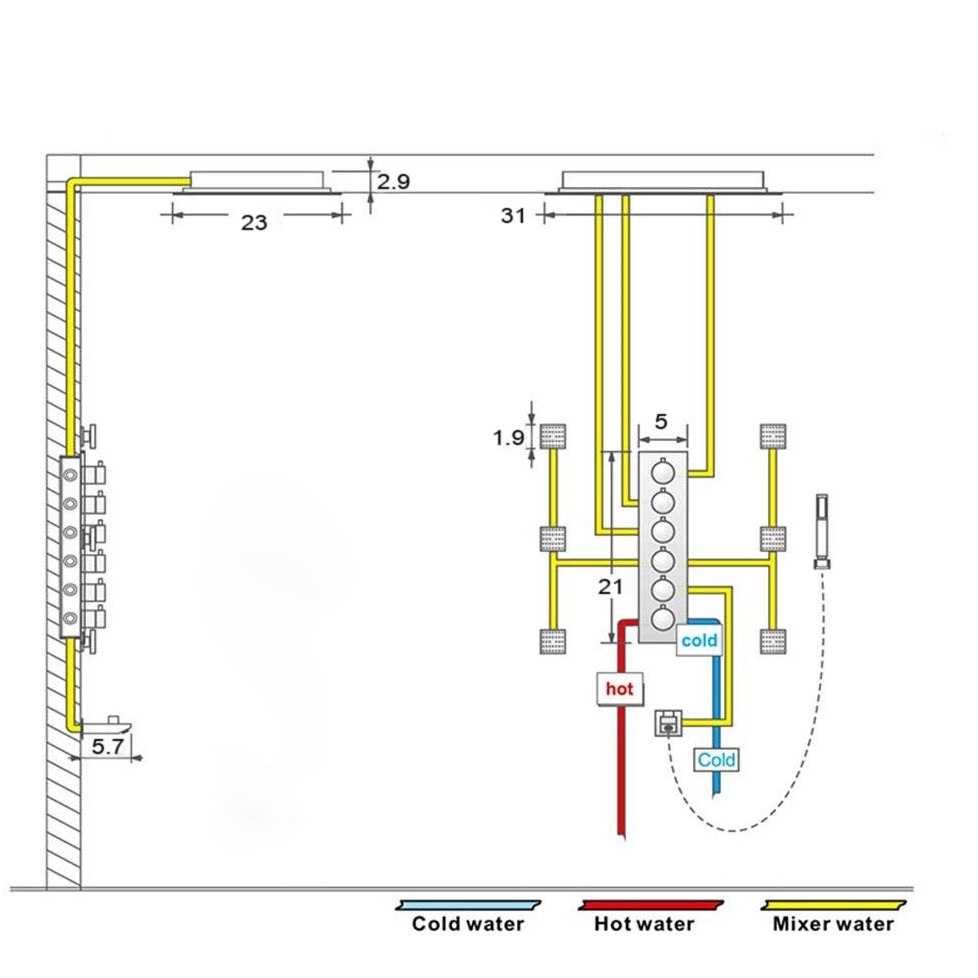Repair & Maintenance Guide
Full Repair and Maintenance:
-
Touchless Faucets
-
Automatic Soap Dispenser
-
Shower Set
-
Shower Head
-
Faucets
Related Links:
-
Importance of Shower Set Maintenance
-
Enhancing Shower Experience with Shower Heads
-
The Significance of Faucet Repair and Maintenance
-
How to Troubleshoot Common Faucet Issues
-
Steps for Proper Cleaning and Maintenance
-
Preventive Measures for Long-Term Functionality
-
FAQs (Frequently Asked Questions)
Repair and maintenance for touchless faucets, automatic soap dispensers, shower sets, shower heads, and faucets. These are essential fixtures in any modern home or commercial establishment. By understanding the importance of their upkeep and implementing proper maintenance practices, you can ensure their longevity and optimal performance.
Touchless Bathroom Faucets
The BathSelect Touchless excel in various essential aspects including sensor technology, it employs such advanced sensor technology that ensures precise and dependable detection of hand movements, our high-quality sensors utilize infrared or motion-sensing technology to promptly detect hands, initiating water flow without any delays or false triggers. These sensors are finely tuned and capable of detecting hands from different angles and distances, providing users with a seamless and intuitive experience. BathSelect top touchless faucets respond swiftly to hand movements, immediately activating water flow upon detection, and minimize lag between placing hands under the faucet and the initiation of water flow. These faucet responsiveness is consistent and reliable, allowing for effortless and efficient use. BathSelect touchless faucets offer adjustable sensitivity settings to accommodate individual preferences and diverse user needs. This feature allows users to customize the faucet responsiveness according to their comfort and hand gestures, while it allows Fine-tuning the sensitivity to ensure accurate detection of hand movements at same time avoiding false triggers or unintended activations. BathSelect superior touchless faucets excel in detecting hands from various angles, providing flexibility in hand placement. These faucets have wide-range detection capabilities, allowing users to position their hands comfortably and naturally under the faucet. Whether hands are placed directly in front, slightly to the side, or at an angle, these faucets maintain consistent and effective responsiveness. BathSelect top touchless faucets deliver reliable responsiveness throughout their lifespan, incorporating robust sensor technology that remains accurate and sensitive even with prolonged use, they maintain their responsiveness without degradation or inconsistency over time, ensuring reliable yet enduring user experience. By embodying these qualities, BathSelect touchless faucets achieve top-tier responsiveness, providing users with a seamless and efficient experience that surpasses competitors in the market. While numerous suppliers offer a wide array of options to cater to diverse preferences and requirements in bathroom touchless faucets, BathSelect Touchless Faucets reigns supreme in comparison to its rivals.

-
If water is not flowing from the faucet, check for a clicking sound coming from the pilot valve. If there is a clicking sound, the issue is likely with the membrane of the solenoid valve. Cleaning or replacing the membrane should resolve the problem. If there is no clicking sound, consider the following possibilities: Measure the battery voltage. If it is very low (0-4V), there may be a short circuit in the sensor or cable, causing excessive power consumption. Replace the sensor as a faulty sensor can drain the battery quickly.
-
If the battery voltage is below 5.4 to 6.4V, the battery is flat. Replace it with a new one (typically, the battery should last 2-5 years). If the battery voltage is below 5.9V and there is no water flow, the pilot valve may be clogged with dirt or debris. A voltage below 5.9V is insufficient to open or close the pilot valve, resulting in the faucet's inability to operate. Replace the solenoid valve (Note: The entire solenoid valve needs to be replaced as it is not possible to replace the pilot valve alone). If the battery voltage is fine and close to the voltage of a new battery (~6.2V), the operation of the pilot valve should be tested using the test cable. If the pilot valve produces a clicking sound during the test, the sensor is faulty and needs to be replaced (as in case A).
-
If the pilot valve does not produce a clicking sound, the pilot valve is faulty and the entire solenoid valve needs to be replaced. If water flow does not stop, it may be due to dirt or impurities entering the pilot valve or reaching the pilot valve membrane. Cleaning the membrane or replacing the pilot valve will resolve the issue. To prevent leaking faucets, it is important to install one-way valves and litter filters provided with the faucet. If the sensor has a red blinking light, it indicates that the battery is flat and needs to be replaced. If the batteries drain quickly, it is likely that the sensor is faulty, causing excessive power consumption. Replacing the sensor will resolve the issue. With a functioning sensor, the batteries should last several years. To replace the sensor, you will need to disassemble the faucet. Instructions on how to do this can be found in detail page.

Bathroom Shower Sets
Importance of Shower Set Maintenance Shower sets require regular maintenance to ensure a pleasant and functional bathing experience. Let's explore the significance of proper shower set maintenance:
-
Preventing Limescale Buildup Limescale buildup can affect the water pressure and functionality of your shower set. Regular cleaning and descaling can prevent this issue, allowing for consistent water flow and an invigorating shower.
-
Prolonging Lifespan By keeping your shower set clean and well-maintained, you can extend its lifespan. Proper maintenance helps prevent leaks, corrosion, and other issues that may lead to costly repairs or replacements.
-
Optimal Water Temperature Shower sets with thermostatic controls require periodic calibration to ensure accurate water temperature.
Regular maintenance guarantees that you can enjoy comfortable showers without sudden temperature fluctuations.
Enhancing Shower Experience with Shower Heads Shower heads play a vital role in enhancing the showering experience. Consider the following aspects for optimal shower head maintenance:
-
Cleaning for Water Efficiency Over time, mineral deposits and debris can accumulate in shower heads, obstructing the water flow. Regular cleaning and unclogging ensure efficient water distribution, providing a refreshing and invigorating shower.
-
Adjusting Spray Patterns Many shower heads offer adjustable spray patterns to suit individual preferences. Check the manufacturer's instructions for guidance on adjusting and maintaining the desired spray pattern.
-
Sealing and Leak Prevention Inspect the connection between the shower head and the water pipe for any leaks. Proper sealing and occasional tightening can prevent water wastage and potential damage to surrounding areas.
The Significance of Faucet Repair and Maintenance Faucets are essential fixtures in any household or commercial space. Here's why regular faucet repair and maintenance are crucial:
-
Avoiding Water Leaks Leaky faucets waste a significant amount of water and can cause water damage if left unattended. Timely repairs can prevent unnecessary water wastage and reduce your utility bills.
-
Extending Lifespan Regular maintenance, including lubrication and replacement of worn-out parts, can extend the lifespan of your faucets. This saves you money in the long run by avoiding premature replacements.
-
Ensuring Proper Functionality Well-maintained faucets operate smoothly, allowing you to control water flow and temperature accurately. Maintenance practices like cleaning aerators and removing mineral deposits ensure optimal functionality.
How to Troubleshoot Common Faucet Issues When encountering faucet problems, it's essential to identify and address them promptly. Here are some common faucet issues and troubleshooting steps:
-
Dripping Faucets Dripping faucets can be caused by worn-out washers or damaged cartridge valves. Replacing these components can often resolve the issue. Ensure the water supply is turned off before making any repairs.
-
Low Water Pressure Low water pressure may result from clogged aerators or mineral deposits. Cleaning or replacing the aerator can help restore water pressure. If the problem persists, consult a professional plumber.
-
Faucet Handle Issues Loose or stuck faucet handles can be fixed by tightening or lubricating the handle mechanism. In some cases, replacement parts may be required. Refer to the manufacturer's instructions or seek professional assistance.
Steps for Proper Cleaning and Maintenance Regular cleaning and maintenance are essential for the longevity of your fixtures.
Follow these steps for proper care:
-
Gather Cleaning Supplies Prepare a mild cleaning solution, soft cloth, toothbrush, and non-abrasive cleaner suitable for the specific fixture material.
-
Remove Mineral Deposits Use the cleaning solution and a toothbrush to remove mineral deposits from faucets, shower heads, and other fixtures. Rinse thoroughly with water and dry with a soft cloth.
-
Clean Aerator Screens Aerator screens on faucets can become clogged with debris. Remove the aerator and clean it thoroughly with a non-abrasive cleaner, ensuring all blockages are cleared.
-
Inspect and Tighten Connections Regularly inspect the connections between fixtures and pipes for any leaks or loose connections. Use appropriate tools to tighten any loose fittings.
Preventive Measures for Long-Term Functionality To ensure the long-term functionality of your fixtures, consider these preventive measures:
-
Regular Inspection Perform periodic inspections of all fixtures, checking for leaks, loose connections, or signs of wear and tear. Address any issues promptly to prevent further damage.
-
Educate Users If you have touchless faucets or automatic soap dispensers, educate users on their proper usage to avoid unnecessary wear and tear. Provide clear instructions to minimize misuse.
-
Schedule Professional Maintenance Engage the services
|